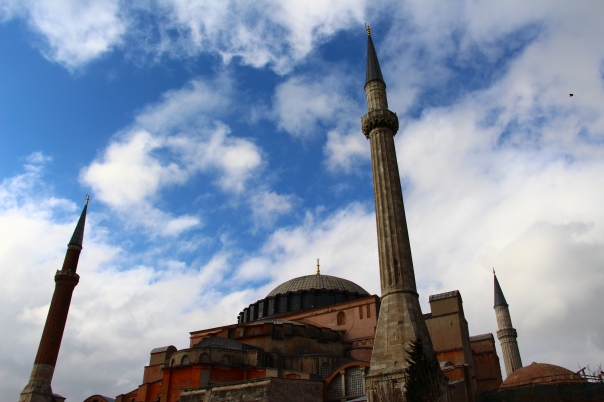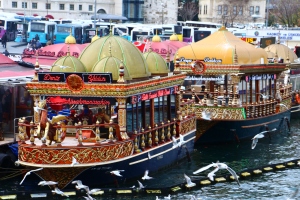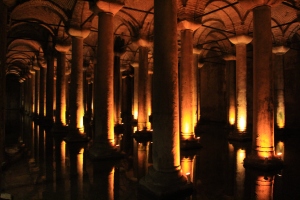Blog Archives
Istanbul (not Constantinople) – November 2014
As the 1950’s swing-style music “Istanbul (not Constantinople)” reverberated in our heads, my wife and I decided to visit Istanbul (not Constantinople), with a side trip to Ephesus (for another post), for our 10th wedding anniversary. Sure, we’ve seen the recent news of unrest in the southern part of Turkey, bordering Syria and Iraq, and we were aware of ongoing tensions with the Kurds, and we were made aware of a recent incident involving U.S.military personnel being harassed and assaulted by a Turkish nationalist group called Turkish Youth Union, and some concerns (legitimate or otherwise) about less than ideal treatment of Americans in an Islamic nation…but the novelty of being able to say that we were in Turkey for “Turkey Day” (or for those non-Americans, during Thanksgiving Day when family and friends gather and where turkey – the fowl – is normally the centerpiece of a feast) was just too much to pass up. Of course, being on multiple lists as one of the top travel destinations in the world made our selection of Istanbul (not Constantinople) as a place to visit over Thanksgiving and our 10th wedding anniversary, an easy choice.
“Istanbul was Constantinople
Now it’s Istanbul, not Constantinople
Been a long time gone, Constantinople
Now it’s Turkish delight on a moonlit night”
OVERVIEW
Istanbul (not Constantinople) has a rich history, dating back to its establishment as the Greek city of Byzantium, in 660 BC, to the Roman Empire, when it was renamed Constantinople and recognized as the new capital of the Roman Empire in 324 AD under Constantine the Great, through the Byzantine and Latin Empires (think Crusades) from 395 to 1453, and the eventual conquer of Constantinople by the Ottomans and the establishment of the Ottoman Empire from 1453 to 1922. Following the collapse of the Ottoman Empire after World War I, Turkish revolutionaries emerged victorious in the Turkish War of Independence. In 1923, The Turkish Republic was established under Mustafa Kemal Ataturk (or the father of all Turks in Turkish, a name only he can have) and in 1930, under a Turkish law, Constantinople ceased to be a recognized name of this important city for both Christians and Muslims, forever replaced by Istanbul (not Constantinople).
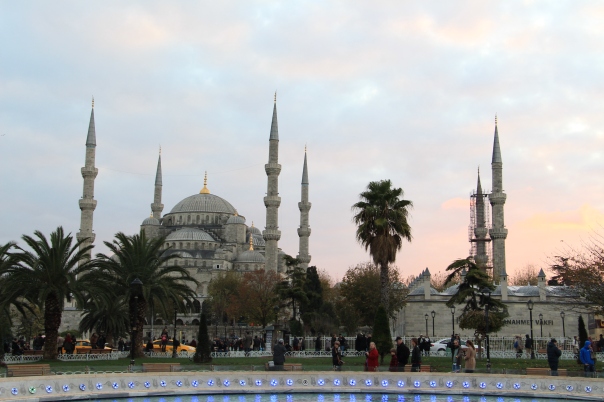
The Sultan Ahmed Camii or popularly known as the Blue Mosque for the blue tiles adorning its interior. It was built from 1609 to 1616, during the rule of Ahmed I.
We knew November weather in Istanbul (not Constantinople) would not be ideal, being relatively chilly and wet, with highs in the high 50s (Fahrenheit of course), and lows in the low to mid 40s, accompanied by an average precipitation of 4.35 inches. One can expect precipitation, or rain, during close to half the number of days in the month of November. However, the less than ideal weather conditions were offset by the lower number of visitors to the city, and arguably better prices for accommodations and travel arrangements.
“Every gal in Constantinople
Lives in Istanbul, not Constantinople
So if you’ve a date in Constantinople
She’ll be waiting in Istanbul”
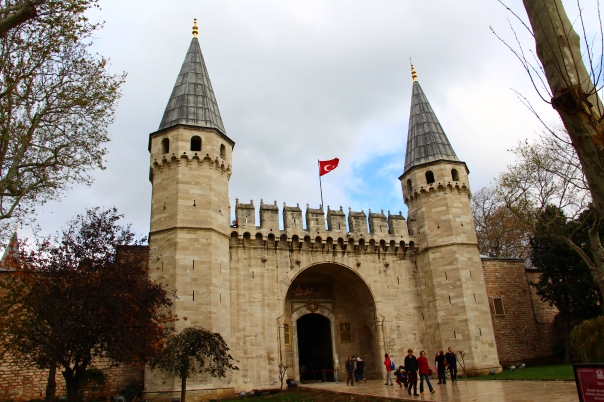
Topkapi Palace, constructed by Fatih Sultan Mehmet (Mehmet the Conqueror) in 1476, was utilized as the administrative center of the Ottoman empire and the residence of the sultans for over 380 years.
LOGISTICS
Prior to our travel, we had to procure our visas via the website https://www.evisa.gov.tr/en/tour/ for $20 per person. Since Turkey still isn’t part of the European Union, and even though there have been talks about a more liberal policy for visas between the EU and Turkey, a visa is still required for Americans visiting Turkey. The website makes getting Turkish visas quite easy and sidesteps any further delays at the airport.
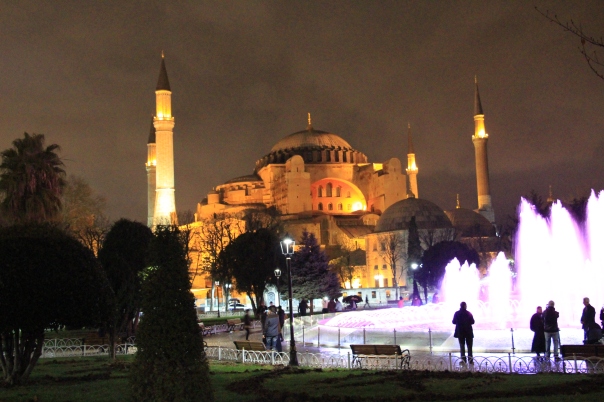
Hagia Sophia or Ayasofya in Turkish, is a former Greek Orthodox patriarchal basilica, later an imperial mosque, and now a museum (Ayasofya Müzesi) in Istanbul. From the date of its construction in 537 under Emperor Justinian until 1453, it served as an Eastern Orthodox cathedral and seat of the Patriarchate of Constantinople, except between 1204 and 1261, when it was converted to a Roman Catholic cathedral under the Latin Empire. The building was a mosque from 29 May 1453 until 1931. It was then secularized and opened as a museum on 1 February 1935
We were flying in from Venice and opted for a direct flight via Turkish Airlines. Our research yielded mostly positive reviews of Turkish Airlines and we were impressed by the quality of service we received during our flight. The in-flight meal for the relatively short flight, as well as the Turkish delights being served prior to our meals, were prepared well and quite flavorful for an airline meal. We flew into the Ataturk International Airport (IST) on the European side of the city as opposed to the much farther Sabiha Gökçen International Airport (SAW) serving the Asian side of the city. Some of the budget airlines in Europe fly into SAW, so expect to pay more for the airport transfer to and from your hotel if you opt to use one of those airlines.
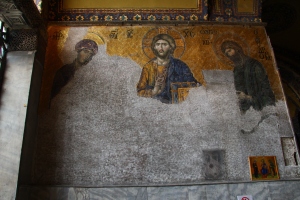
The Deësis mosaic, in the Aya Sofya, probably dates from 1261. It was commissioned to mark the end of 57 years of Roman Catholic use and the return to the Orthodox faith. It is widely considered the finest in Hagia Sophia. In this panel the Virgin Mary and John the Baptist, both shown in three-quarters profile, are imploring the intercession of Christ for humanity on Judgment Day.
While some hotels offer transportation from the Ataturk International Airport, most of them would charge from €35 up to €60 for the “privilege” of door to door service. We found Istanbul Airport Express to be on time, professional, and offered superb private shuttle service and value for just €20 each way (for up to 4 people). Oh yeah, make sure to be on the lookout for your driver holding your name up before you go seeking out one of the ATMs to withdraw local currency.
Our research also indicated that it makes sense to withdraw local currency, in this case Turkish Lira, using one of the ATMs at the airport than with one of those currency exchange kiosk at the airport. You would certainly get a better exchange rate and will not have to pay exorbitant exchange fees. We prefer using the debit card for our Schwab Bank High Yield Investor Checking to withdraw cash from the ATM when travelling internationally, as all charges for ATM withdrawals worldwide are refunded back to you. While shops and restaurants would gladly accept Euros and US dollars, you would certainly not enjoy a favorable exchange rate…so it is highly suggested you use the local currency or charge your purchases, preferably using a credit card without foreign transaction fees.
We highly suggest getting accommodations at a hotel in the Sultanahmet district, where most of the major tourist attractions are within walking distance and where a lot of restaurants (albeit catering to tourists) and shops are located. Our hotel in Sultanahmet offered a room with a full view of the Sea of Marmara and a partial view of the Aya Sofya or Hagia Sophia. From our hotel, we can walk to Topkapi Palace, Blue Mosque, Hagia Sophia, Basilica Cistern, Hippodrome, Grand Bazaar, and Egyptian Spice Market. We opted to take the tram (for 4TL per person one way) to explore Dolmabahce Palace and a funicular (another 4TL per person) to get up to the modern part of Istanbul, Taksim Square and surrounding areas. We found the public transportation easy to manage and there were helpful Istanbullus (residents of Istanbul) who assisted us when we were trying to understand how much we needed to pay for the tokens to get on the tram.
For additional ideas, sample itineraries, and tips on future trips to Istanbul, we found the following website very useful: Turkey Travel Planner, in addition to the TripAdvisor Istanbul forum.
“Even old New York was once New Amsterdam
Why they changed it I can’t say
People just liked it better that way”
ATTRACTIONS
The “must-see” attractions in Istanbul all begin with the “Big Three” of Topkapi Palace, Hagia Sophia, and the Blue Mosque, which were pretty much clustered together, in addition to the Hippodrome and the Basilica Cistern. One can opt to purchase a Museum Pass for 85TL, which would allow entry into the following sites:
– İstanbul Archaeological Museums
– Chora Museum
– İstanbul Mosaic Museum
– Hagia Sophia Museum (normally 30TL per person if purchased as an individual ticket)
– Topkapi Palace with Harem (if purchased individually would be 30TL for Topkapi with additional 15TL for Harem)
– Museum of Turkish and Islamic Arts
The Basilica Cistern (20TL) is not covered by the Museum Pass. Since we had limited time to explore the city especially with a planned day trip to Ephesus, we opted to purchase individual tickets. If you had more time and plan to visit as many museums as you can, then it makes sense to purchase a Museum Card instead of individual tickets to different sites.
Of all the sites, my wife and I both thought the Hagia Sophia was the best. The history behind the Hagia Sophia is a microcosm of the history of Istanbul and Turkey in itself. The architecture and the beauty of the interior, more so than the exterior, were awe inspiring. The details in the mosaics, as well as the accompanying history behind them were mesmerizing.
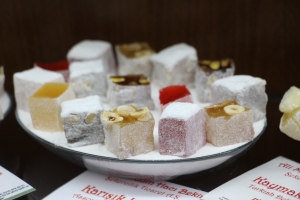
Lokum or Turkish Delights were introduced to Europe in the 19th century when an unknown Brit reputedly became very fond of the delicacy during his travels to Istanbul and purchased cases of it, to be shipped back to Britain under the name Turkish delight. It became a major delicacy in Britain and throughout Continental Europe for high class society.
The Blue Mosque possesses its own beauty. Built over 1,000 years later at the orders of Sultan Ahmed I, he intended to match and even surpass the beauty and grandeur of the Hagia Sophia…but my wife and I both thought the interior of the Hagia Sophia was more striking. Since the Blue Mosque is an active mosque, a visitor must be cognizant of prayer times and avoid those times (5 times a day), plus 30 minutes before and after, for visits. I highly suggest women bring their own scarf to cover their heads with upon entering the mosque, even though one will be provided for you for free if you don’t have one…but you don’t know whose head that was on before.
For Topkapi Palace, where sultans of the Ottoman Empire lived and conducted their business for over 380 years until moving to the Dolmabahce Palace along the Bosphorus, we read that it was highly recommended to pay extra to have access to the Harem. We did as recommended and even rented audio guides to enhance our “experience”. Well, we could have done without the audio guides as pretty much all relics and rooms in the Topkapi Palace were labeled and catalogued in English, to include the Topkapi Dagger and the 86 carat Spoonmaker’s Diamond. While the Harem was interesting and provided insight into the extravagance of life as a sultan, it didn’t really provide that “wow” factor for us.
The Basilica Cistern, the largest of several hundred ancient cisterns that lie beneath the city and built in the 6th century during the reign of Byzantine Emperor Justinian I, was also interesting. It was here that we met two elderly English sisters from Manchester, with one actually living down in Bodrum, who we had an entertaining conversation with.
While in Istanbul, I suggest a visit to Taksim Square to see the modern side of Istanbul after being immersed in the old city of Sultanahmet district. Walk down Istiklal Caddesi and see all those upscale shops and a busy pedestrian street teeming with fashionably dressed Istanbullus and tourists. Head down towards Galata Tower, a Romanesque style tower built as Christea Turris (Tower of Christ) in 1348 during an expansion of the Genoese colony in Constantinople, on your way to Galata Bridge and those colorful boats at the Eminonu end of the bridge to sample a balik ekmek, or fish sandwich for 6TL. Then to the Egyptian Spice Market and to the Grand Bazaar. Just temper your expectations of a grand bargain when haggling with the professionals, especially at the Grand Bazaar.
Istanbul is a “foodie” city with a myriad of culinary influences that permeate its cuisine, no doubt owing to the vastness and reach of the Ottoman Empire at its peak. While in the city, you of course have to try shish kabob, doner kabob, Testy or Testi kabob served in flaming terra cotta pots, Turkish delights (we prefer Ali Muhiddin Haci Bekir confectioners, the first to serve lokum or Turkish delights to the sultan), durum (or wrap) at Durumzade (popularized by Tony Bourdain during his visit to this city), simit (Turkish version of a pretzel covered in toasted sesame seeds), and balik ekmek. The more adventurous eaters might try the kokorec or lamb intestines, the stuffed mussels (which Lonely Planet commented might have more bacteria than a Petri dish), and the seemingly benign lahmacun (Turkish version of pizza).
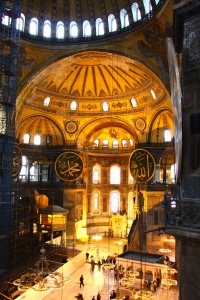
Ayasofya, which dwarfed all other buildings in Constantinople, reigned as the greatest church in Christendom until Constantinople fell when Mehmet the Conqueror took possession of it for Islam and immediately converted it into a mosque.
“So take me back to Constantinople
No, you can’t go back to Constantinople
Been a long time gone, Constantinople
Why did Constantinople get the works?
That’s nobody’s business but the Turks”
IMPRESSIONS
We had a very enjoyable visit to Istanbul and highly recommend a visit to this historic city to family and friends. We found the city to be clean and safe, and never did we fear for our safety while on public transport or walking along the major avenues and side streets of the city. You have to brace yourself for the aggressive nature by which restaurateurs and shop owners would try and get you into their establishment, but for the most part, we found Istanbullus to be friendly and accommodating. Additionally, Istanbul and Turkey in general, unlike many of the European cities and countries, observe tipping much like in the U.S. Service in restaurants and hotels are generally better than what you would experience in most European cities…and that is probably a function of their expectations for tips.
NOTES
– Istanbul’s Ataturk airport is the only airport, thus far, while we were visiting Europe (actually, the one in Izmir is the same) wherein entry into the airport requires one security checkpoint, followed by another checkpoint for airline passengers trying to get to their gate.
– Do not be alarmed by heavily armed guards in uniform at the airport as well as some of the museums, as we saw at the Imperial Gate, for entry into Topkapi Palace. I guess that is commonplace, but at no point did we not feel secure while exploring the city, day or night.
– Istanbul, and Turkey in general, at least we saw the same in Izmir and Selcuk, have a healthy population of stray cats and dogs. While stray dogs appear to be tagged, the cats, while seemingly well cared for, are another story and are proving much more difficult for the government to get a handle on. It was surprising to us, that there were tourists and locals who would feed and sometimes pet these stray animals, with little to no concern for diseases those animals might have.
– With Turkey considering itself a secular country dominated by a population with at least 98% are Muslims, do not be surprised to be awakened by a Muslim call to prayer being blared on loudspeakers coming from nearby mosques…and there are plenty of them, despite the presence of some churches and synagogues
– Istanbul is notable as the only city in the world to be located between two continents, Europe and Asia.

